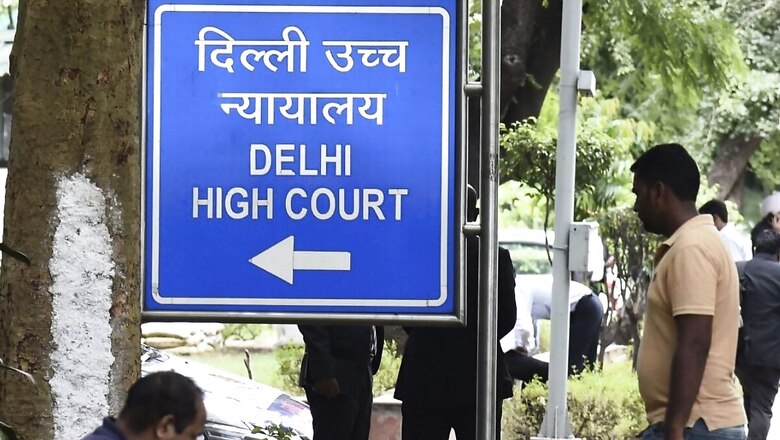
views
Article 348(2) of the Constitution of India mandates the use of regional languages in the High Courts of the country, recognising the importance of regional languages in the legal system and ensuring that justice redressal mechanisms are accessible to all citizens, regardless of their linguistic background.
The Official Language Act of 1963, too, reiterates this stance and provides under Section 7: “As from the appointed day or any day thereafter the Governor of a State may, with the previous consent of the President, authorize the use of Hindi or the official language of the State, in addition to the English language, for any judgement, decree or order passed or made by the High Court for that State and where any judgement, decree or order is passed or made in any such language (other than the English language), a translation of the same shall accompany it in the English language issued under the authority of the High Court.”
As India celebrates the Azadi ka Amrit Mahotsav, stepping into 75 years of Independence, the use of regional dialect must be pressed as it would ensure that the masses, which are not proficient in English, can participate in court proceedings. In a diverse country like ours, where a dialect changes every 100 km, language mustn’t become a barrier for people who come knocking on the doors of court for justice and receiving a fair trial.
Notably, Section 12 of the Legal Services Authority Act, 1987 provides for free legal aid to the weaker sections of society, but the question that befalls us is how can free legal aid be ensured when those seeking redressal are unable to interpret the proceedings and solely depend on what they are being told by the legal counsel.
Use of regional languages must also be ensured as it would promote preservation of regional culture, essential to a region’s identity. With the implementation of use of regional languages in the High Courts, the legal system would acknowledge and respect the cultural diversity of the country, thereby inculcating a sense of fraternity in the citizens. This would also go a long way in making sure that regional languages do not become extinct, a concern in many parts of the country, more so for the tribal-dominant states.
It can be further argued that such a practice would increase the efficiency and effectiveness of the legal system. When people can understand court proceedings in their language, they are more likely to engage in the process and participate fully. This could help reduce pendency and ensure that court proceedings are conducted smoothly, saving time and resources for all parties involved.
It would be important to mention here that a growing awareness of the importance of regional languages has been seen as many states have implemented policies that require the use of regional languages in their respective High Courts. For example, the use of Hindi was authorised long back in the proceedings as well for judgements, decrees, or orders in the High Courts of Rajasthan, Madhya Pradesh, Uttar Pradesh, and Bihar.
Challenges that persist in implementation are also numerous, one of them being lack of standardisation in legal terminology. Legal terminology varies widely across different regions and dialects, which can lead to confusion and misinterpretation in court proceedings. This calls for standardisation so as to ensure consistency and accuracy in court proceedings.
Furthermore, there is also a need for greater awareness and education about the importance of regional languages in the legal system. One does not come across the general awareness of the legal system and mechanisms available to the citizens up until the university level. The general public is not aware of their right to access justice in their language, and there is a lack of education and resources available to help them navigate the legal system. This can prevent people from seeking justice and can perpetuate systemic inequalities.
To address these challenges, the legal system needs to invest in resources for language training and translation services. This includes training judges, lawyers, and court staff in regional languages and developing standardized legal terminology across languages. It would also include educating the masses on their rights to access justice in their language.
Conclusively, prioritising the use of regional languages could help with the access to justice initiative and promote greater inclusivity and equality. Sun Tzu, legendary Chinese general, strategist, and philosopher who wrote The Art of War, had rightly pointed out, “In the midst of chaos, there is also opportunity.” During the Covid-19 pandemic, the Indian judiciary showcased that when faced with hurdles, it could digitise court hearings for providing uninterrupted justice delivery. This flexibility has to be applied to the present issue of use of regional languages with the aim to strengthen our democratic framework and making our judiciary more citizen-centric with this reform.
Even the Chief Justice of India, DY Chandrachud’s view on the need for regional languages in high courts highlights the importance of embracing linguistic diversity and promoting multilingualism in the judicial system. By advocating for the use of regional languages, he is ensuring that the legal system is inclusive and accessible to those who may not be fluent in the dominant language. This move is also in line with the constitutional mandate to promote the use of regional languages and ensure that citizens have the right to access justice in a language that they understand. Therefore, it is essential for high courts across India to adopt this approach and provide justice to all citizens, regardless of language barriers.
The writer is Managing Partner, Nyaayam Associates, a new-age law firm. Views expressed are personal.
Read all the Latest India News here


















Comments
0 comment